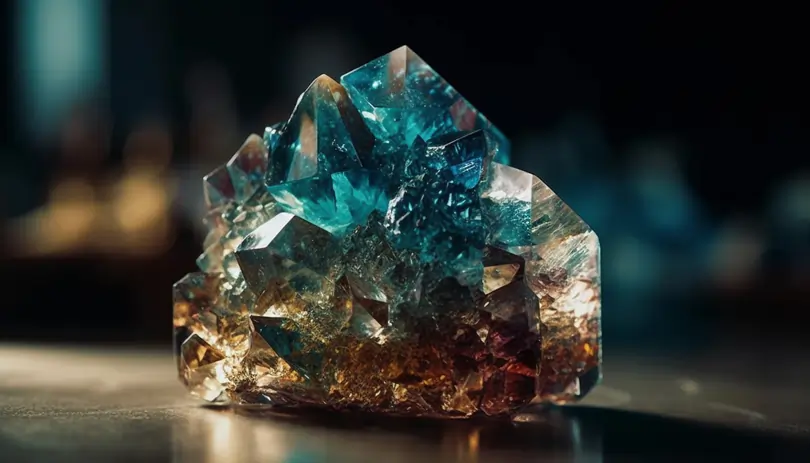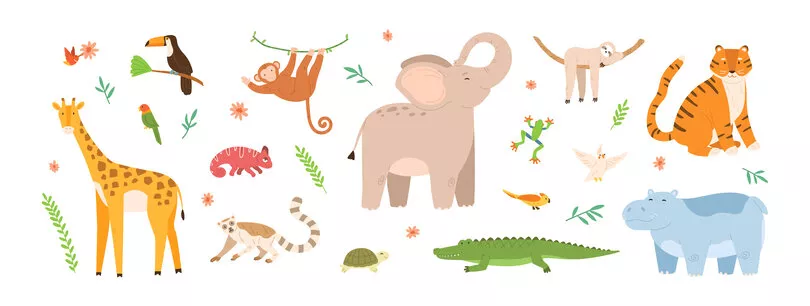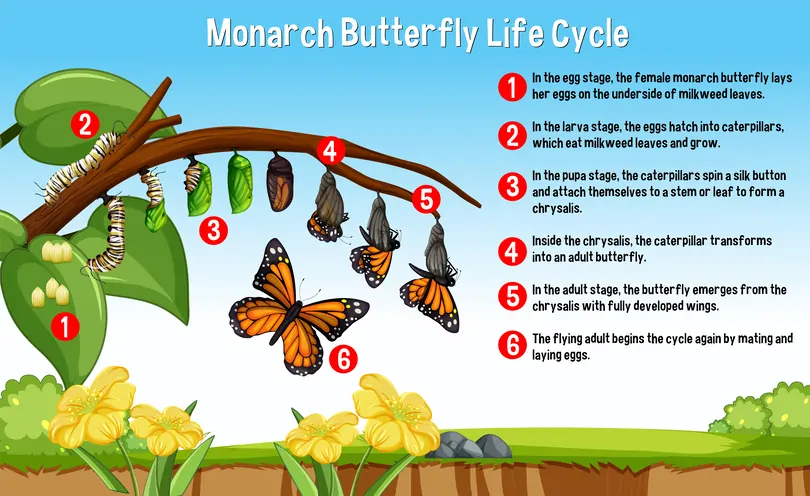Matter
In this article, you will be introduced to the concept of matter based on the Singapore Primary 4 Science Syllabus. You will also learn about the characteristics of matter and how to classify matter according to their states.
What is Matter?
Matter is anything that has mass and occupies space. Matter is made up of tiny particles. Different types of matter have different types of particles. For example, particles that make up plastic are different from the particles that make up copper.
What is Mass?
The mass of an object refers to the amount of matter in the object. It can be measured using the following equipment:
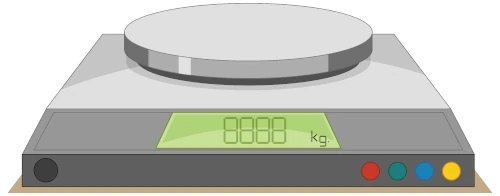
Image Credits: brgfx - Electronic balance
The units for mass are kilogram (kg) and gram (g). The mass of an object remains the same regardless of location.
What is Volume?
The volume of an object refers to the amount of space the object occupies. It can be measured with the following equipment:
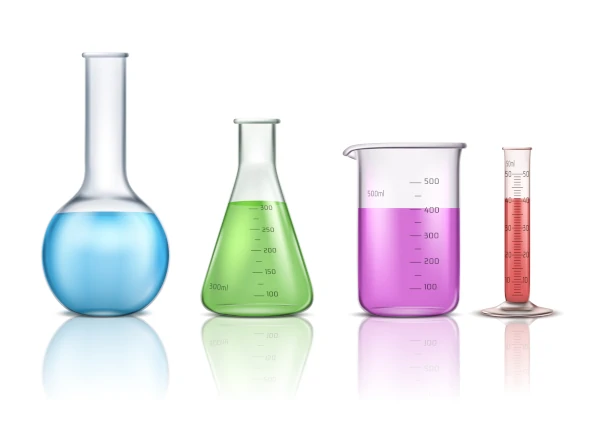
Image Credits: vectorpocket - Measuring Cylinder
The units for volume are litres (ℓ), millitres (mℓ), cubic centimetres (cm3) and cubic metres (m3).
How to measure the volume of an object?
- Fill a measuring cylinder with 100 cm3 of water as shown in Diagram 1.
- Tie a string to the object and gently lower the object into the measuring cylinder until it is fully submerged in the water as shown in Diagram 2.
- Record the new volume.
- The volume of the object is the difference between the new volume and the initial volume of water.
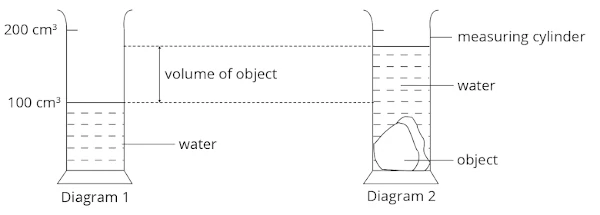
What is Non-matter?
Non-matter is anything that does not have mass and/or does not occupy space. Examples of non-matter are: different forms of energy (light, heat, sound, electrical) and shadow.
Classification Of Matter
Matter can be classified into three states of matter: solid state, liquid state and gaseous state.
| Solid State | Liquid State | Gaseous State |
|---|---|---|
| definite (fixed) shape | indefinite (no fixed) shape | indefinite (no fixed) shape |
| unable to take up the shape of the container | able to take up the shape of the container | able to take up the shape of the container |
| definite (fixed) volume | definite (fixed) volume | indefinite (no fixed) volume |
| cannot be compressed | cannot be compressed | can be compressed |
Conclusion
In this article, we are introduced to what matter is by examining the characteristics of matter. We have looked at examples of non-matter. We have also learnt how to classify matter according to their states - solid, liquid and gas.
Test Your Concepts
Answer the following questions based on the concepts that we have covered in this article. If you are unclear, you may want to revisit the relevant section to revise the concepts.
Question 1:
Sandy pumped equal volume of air into two identical balloons and balanced them on two ends of the bar as shown below.
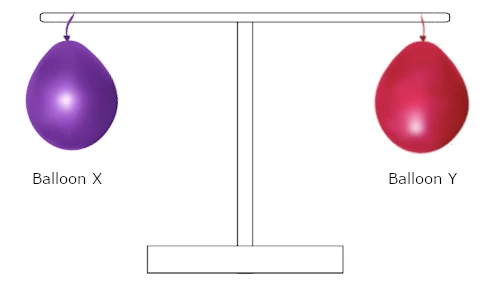
Her brother, Gary, accidentally burst Balloon X, causing the air in Balloon X to escape into the surroundings.
What would most likely happen to Sandy’s set-up? Explain your answer.
Solution:
The balance would tilt downwards towards Balloon Y. The air in Balloon X escaped when it burst, causing Balloon X to be lighter because air has mass.
Solution explanation:
There is no longer air in Balloon X as it had bursted. The side with Balloon Y will now be heavier as that side has the mass of both the balloon and the air inside it, causing the balance to tilt downwards towards Balloon Y.
| Continue Learning | |
|---|---|
| Life Cycle - Flowering Plant | Animal Life Cycle |
| Matter | Light |
Test Yourself
Which of the following statements best explains why a shadow is non-matter?
1: A shadow is grey.
2: A shadow does not have mass.
3: A shadow does not occupy space.
4: Different shapes and sizes of shadows can be formed from an object.
Choose the correct option
A shadow is a non-matter. Thus, a shadow does not have mass and does not occupy space. The colour, shape and size of a shadow does not show that a shadow is a non-matter.
The instructions on how to find the volume of a pebble are jumbled up.
1: Place the pebble into the water carefully.
3: Fill the measuring cylinder with 50 ml of water.
3: Find the difference between the old and new volumes.
4: Record down the new total volume of the water and the pebble.
Arrange the cards to show the correct order in order to find the volume of a pebble.
The measuring cylinder has to be filled up with water first. When the pebble is placed into the water, it will occupy space in the measuring cylinder and push the water level up.
Next, record down the total volume of the water and the object.
Finally, we can find the volume of the pebble by subtracting the old volume (50 ml) from the new volume recorded.
Eugene first moulded a piece of plasticine into a cube. He then re-shaped it into a ball. The ball and cube models of the plasticine shared the same:

The plasticine is a solid that has definite volume and mass. Even if it is molded into other shape, mass and volume will remain constant. The mass is the amount of substance something has and the volume is the space it occupies, both of which is unaffected by its shape.
Sam observed a substance and concluded that it is a gas. Which of the following statement(s) below support(s) his conclusion?
1: It can be compressed.
2: It has a definite shape.
3: It does not have mass.
4: It has a definite volume.
Choose the correct option
Air is matter. All matter has mass and takes up space. Air can be compressed. It does not have a definite shape and volume.
Mr Clown blew a balloon and twisted it into the shape of a dog.

Which of the following statements is true?
Air is compressed due to the twisting of the balloon.




 SG
SG  VN
VN 


